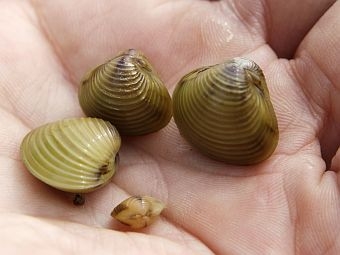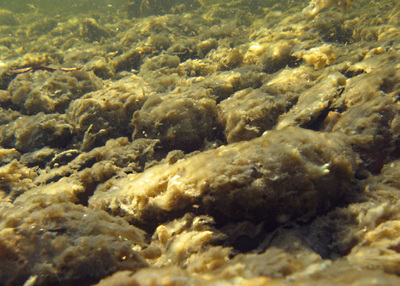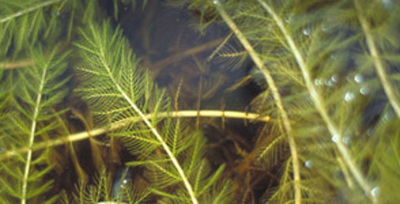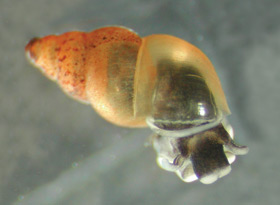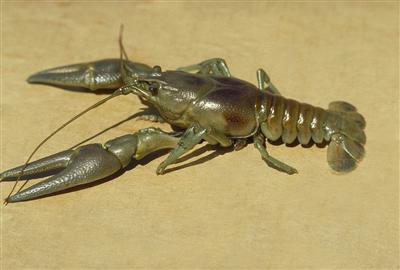Zebra Mussels
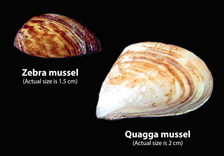
What are they: Zebra Mussels and the closely related Quagga Mussels are small mussels which grow in large colonies. Both mussels are D-shapped with strips of dark brown on lighter yellow or tan. Zebra Mussels are flat on the bottom and will stand on a flat surface. Quagga Mussels are rounded on the bottom and will not sit upright on a flat surface. Both mussels are invasive in the US.
Zebra Mussels can grow to be 2 inches long, and can live for 4 to 5 years. Zebra Mussels are filter feeders and consume much of the floating small organisms in the water. Once infected a waterway can have so many Zebra Mussels that the water becomes crystal clear. This leads to many organisms which rely on the plankton in the water to die.
Zebra Mussels grow in such large number they can block water intakes, decrease efficiency of ships, and pose a danger to people wading into water ways. The mussels also can out compete native organisms, especially native mussels, for space in a waterway.
Zebra Mussels can grow to be 2 inches long, and can live for 4 to 5 years. Zebra Mussels are filter feeders and consume much of the floating small organisms in the water. Once infected a waterway can have so many Zebra Mussels that the water becomes crystal clear. This leads to many organisms which rely on the plankton in the water to die.
Zebra Mussels grow in such large number they can block water intakes, decrease efficiency of ships, and pose a danger to people wading into water ways. The mussels also can out compete native organisms, especially native mussels, for space in a waterway.
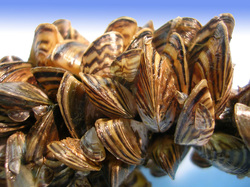
Where are they native: Zebra Mussels are native to Russia and eastern Europe. They spread to western Europe where they are now considered naturalized.
How are they spread: Zebra Mussels originally came to the US in Ballast water in large ships where they were introduced to the Great Lakes. Zebra Mussels can survive for long periods (5 days) out of the water, and small zebra mussels can not be seen. They cling to anything which enters the water and can become a vehicle for transport.
Where are they currently: Zebra Mussels are present in Lake Erie, the Allegheny River basin, and lakes in Tioga and Huntington County.
How are they spread: Zebra Mussels originally came to the US in Ballast water in large ships where they were introduced to the Great Lakes. Zebra Mussels can survive for long periods (5 days) out of the water, and small zebra mussels can not be seen. They cling to anything which enters the water and can become a vehicle for transport.
Where are they currently: Zebra Mussels are present in Lake Erie, the Allegheny River basin, and lakes in Tioga and Huntington County.
How to prevent them: Care should be taken to clean all boats which enter a waterway. Cleaning of live wells or any other area where water contacts is vital. These areas need to be completely dry for at least 5 days, needs to be out of water for longer to allow things to be truly dry.
Remove any and all material from boats and gear prior to leaving a water way. Then further clean the gear and boat with hot pressurized water.
Never move plants or animals from one waterway to another.
Remove any and all material from boats and gear prior to leaving a water way. Then further clean the gear and boat with hot pressurized water.
Never move plants or animals from one waterway to another.

